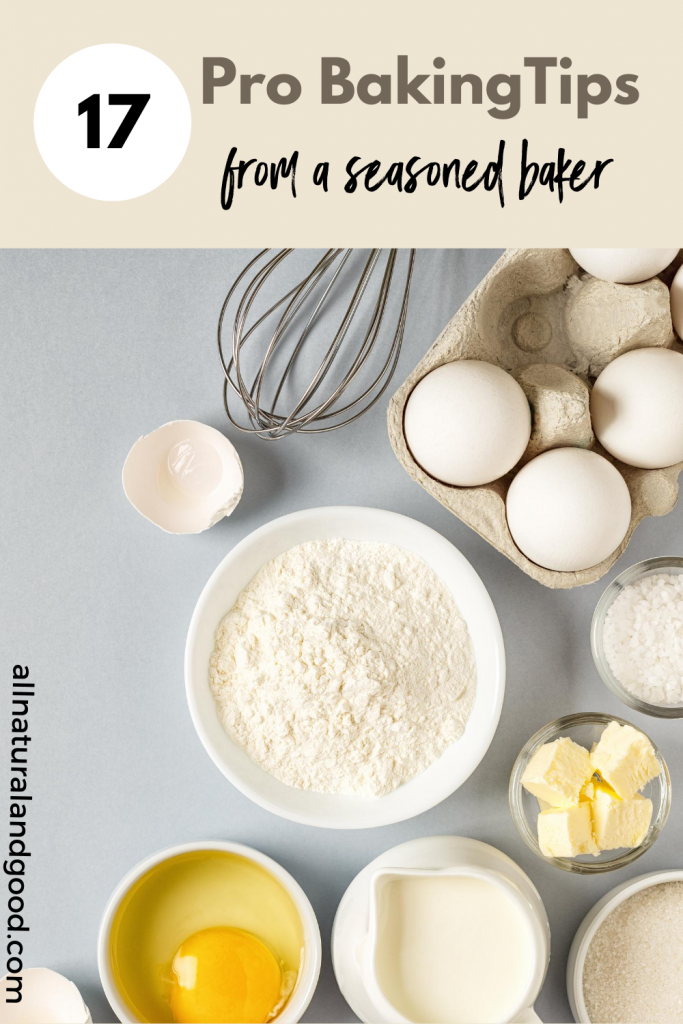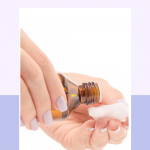This post may contain affiliate links. Click here to read my affiliate disclaimer policy.

Here are 17 professional baking tips from a seasoned chef and baker! These are such useful tips for pie-baking success. This post was written by one of our loyal readers! Have you tried any of these?
17 Professional Pie Baking Tips:
1. When making pies from scratch, use All Purpose flour to make your pie dough. It’s pastier, sticks together better and makes a sturdier dough that’s easier to handle.
2. When rolling out pie dough, use stone ground whole wheat flour as your dusting flour. (ie, the flour you use to keep the pie dough from sticking to your work space) It’s a courser flour so it doesn’t stick become pasty like all purpose does, plus it will give your pie dough a very pretty speckled look. It also adds a very delicious extra flavor to the dough.
3. When rolling pie dough, don’t be afraid to weigh out a little more dough than the recipe requires. For example, if the crust calls for 4oz of dough, weigh out 5oz. If it calls for 6oz, weigh out 8oz. The extra might seem wasteful, but when working with pies, especially ones built with raw fruit (such as Rhubarb), it’ll give you a margin of error you wouldn’t otherwise have. Plus it’s just easier to work with and allows you to have a thicker crust when you finish.
4. When you roll out your dough, don’t worry if it doesn’t come out into a perfect circle. Nobody’s gonna know.
5. Be gentle with the pie dough. It’s very fragile and tears easily. Taken your time rolling it out and be generous with the dusting flour on the top and bottom.
6. When you first starting rolling out your dough, begin by first making it into a perfect ball, then gently flatten it out with your fingers into a fat disk. Be sure to close up any holes or cracks that appear in the process. Those will become major rips later on.
7. Before putting your dough on your work space, first place a large pile of your dusting flour in the center and then begin pressing out your dough into that. It’ll help keep the dough well floured and keep it from sticking to the work surface.
8. Next, dust it well with flour on both sides, flipping it over and over as you press it out by hand into a circle. Stop when it’s roughly about 1/3rd of the final size. Roll out the dough till it’s 2/3rds of its final size, flip, dust generously with flour, then finish.
9. To safely move the now rolled pie crust from the work surface to the pie plate that’s awaiting it, begin by again generously flouring the surface, then gently brush off the excess. Next, gently lift the crust from the work space and pull it towards yourself. Use both hands as it’ll be easier. Once that’s done, take your half crust and fold it over again from left to right until you end up with a quarter crust. IE, your crust folded in half twice.
10. Once you have your crust ready, if it’s the bottom crust, just lift it up and carry it over and lay it in the pie plate with the point of the quarter circle pointing at the center of the plate. Next, unfold it in reverse of how you folded it being careful not to be in a hurry. Once in the pan, carefully draw it into the center just enough to take up the slack in the crust so it fits snugly and fills all the spaces in the pie plate. Don’t leave any air pockets. If you do, bad things may happen later, including your pie generating its own chimney as the bottom crust balloons up and blows its way through the top of the pie.
11. When filling a pie, always do so in the center only. It’s fine if it piles up there because you can always spread it out to the edges to even out the filling. But if you fill from the edges you stand the chance of spoiling the edges of your dough preventing them from sealing properly which will result in leaks when it’s baking and that just makes a sticky mess you don’t want to be forced to clean up. Also, with the exception of more liquid fillings, such as pumpkin pie, a properly filled pie should be gently mounded in the center and taper down towards the edges where the filling should be just below the edge of the pie pan.
12. To put on the top crust, should your recipe call for one, begin by taking a wet paper towel and dab the edges of the bottom crust that lay across the lip of the pie pan. It works best if it’s sopping wet as it makes the dough sticker. Next, follow the same procedure you used with the bottom crust to apply the top crust. However, once you lay it over the pie you may have to adjust its position a bit. To do this gently lift the edges and move it around until the pie crust is centered. To complete your work and seal the pie, simply crimp the edges with your fingers. Finally, use a sharp knife to go around the edge and remove the excess. Discard the scraps, then fix any crimps that didn’t survive the trimming by crimping them again with your fingers.
13. If you don’t want to waste any of your scraps, you can either set them aside for patching pieces for crusts that get irreparably ripped, or use them to make patchwork dough crusts. This is done by taking the scraps and using them to line the bottom and/or top of a pie. Don’t be afraid to overlap the pieces, or to press them along the seams to join them together into a single crust. Also, reminder, don’t roll your scrap dough a second time as it ruins the dough if you do. So just use the scraps as is to create a patchwork crust or fix holes.
14. No matter what pie you are baking, if it has a top crust, you will need to punch steam holes in it. Otherwise your top crust will expand so large that it’ll look like Mario had a baby with someone from the Koopa kingdom. To make the steam holes, simply poke the crust with a knife to create a simple slit. Put at least a dozen into the crust, positioned randomly but evenly across the surface.
15. Always cool any baked pie for a pie a whole day at room temperature before freezing or refrigerating to avoid having your pie become soggy after freezing. Ignore this rule if the pie requires immediate refrigeration immediately or shortly after baking such as some meringues.
16. When freezing pies, place an empty pie plate on top of the pie before placing in the freezer. This will both allow you to stack your pies while they freeze, but it’ll also protect the top of the crust from damage while in the freezer. PS, a 9″ pie with an upper and lower pie plate will fit comfortably in a 1 gallon Ziplock freezer bag. Placing your pie into one of those will allow the protective top cover to stay in place and will also protect your pie from freezer burn.
17. If you have leftover unrolled pie dough (ie, raw dough, not scraps) after a day of baking, roll it into a roughly square shape, then slather thickly with melted butter, cinnamon and sugar. Roll, slice into 1″ wide pieces, butter the top, cover with cinnamon/sugar mix, bake at 400f until crispy (about 20-30 minutes roughly). It makes tasty little crunchy, flaky cinnamon sugar bites.
Start your pie baking journey by trying out our Fireball Pumpkin Pie recipe!
Amazon and the Amazon logo are trademarks of Amazon.com, Inc, or its affiliates.





